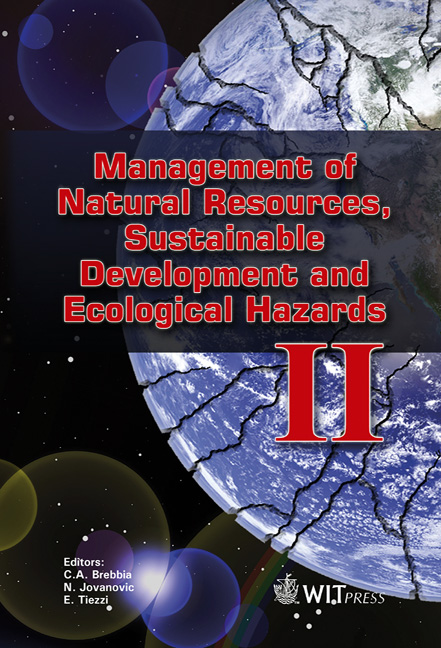In-situ Nitrate Removal From Groundwater To Supply Rural Communities: Experimental Work And Modelling
Price
Free (open access)
Transaction
Volume
127
Pages
10
Page Range
427 - 436
Published
2009
Size
1,728 kb
Paper DOI
10.2495/RAV090371
Copyright
WIT Press
Author(s)
S. Israel, G. Tredoux, P. Engelbrecht, J. Wilsenach, J. Germanis & A. Maherry
Abstract
With the increasing demand on limited resources, groundwater will have to serve more people in southern Africa, especially in remote rural areas. The situation is becoming more precarious with the projected change in rainfall and climate patterns. Concurrently, nitrate pollution of groundwater would seem to be on the increase. This makes the remediation of high nitrate groundwater by low cost and robust methods a much-needed intervention. Three methods that have shown potential for full-scale application are reverse osmosis, ion exchange, and biological denitrification. Biological denitrification is specific in the removal of nitrate and is thus the most versatile approach being studied. In situ denitrification, i.e. within the aquifer, is an attractive alternative due to relative simplicity and low investment and maintenance costs. Research needs identified include minimisation of nitrite accumulation, optimisation of reaction conditions, inhibitory effects of reaction intermediates and by-products, and optimisation of measuring and control systems. This work presents a laboratory model set up using a 2200 x 350 x 350 mm column for denitrifying high nitrate groundwater. The column contains seven ports which stretch along the entire column like observation boreholes and can be used either for sampling or injecting during the experiment. The sampling/injecting ports are at 300, 500, 700, 1000, 1200, 1500, and 1700 mm distance respectively. Hence the reactions can be studied over the total length of the column. An unconfined primary aquifer will be simulated. Flow, pH, EC and initial conditions will be as close as possible to field conditions. Monitoring will include nitrogen species (organic N, NO2-, NO3- and NH4+), pH, EC, Eh, as well as indicator microbiological species (e.g. heterotrophic plate count). Hydraulic properties and
Keywords
nitrate pollution, denitrification, experimental work, modelling of denitrification





